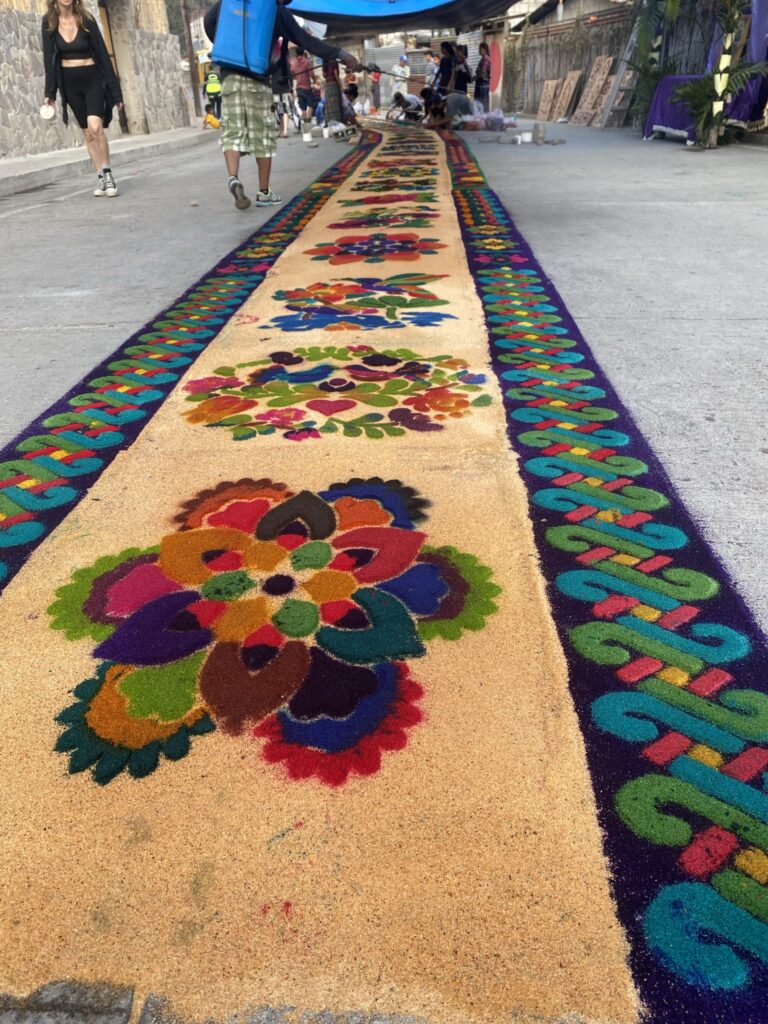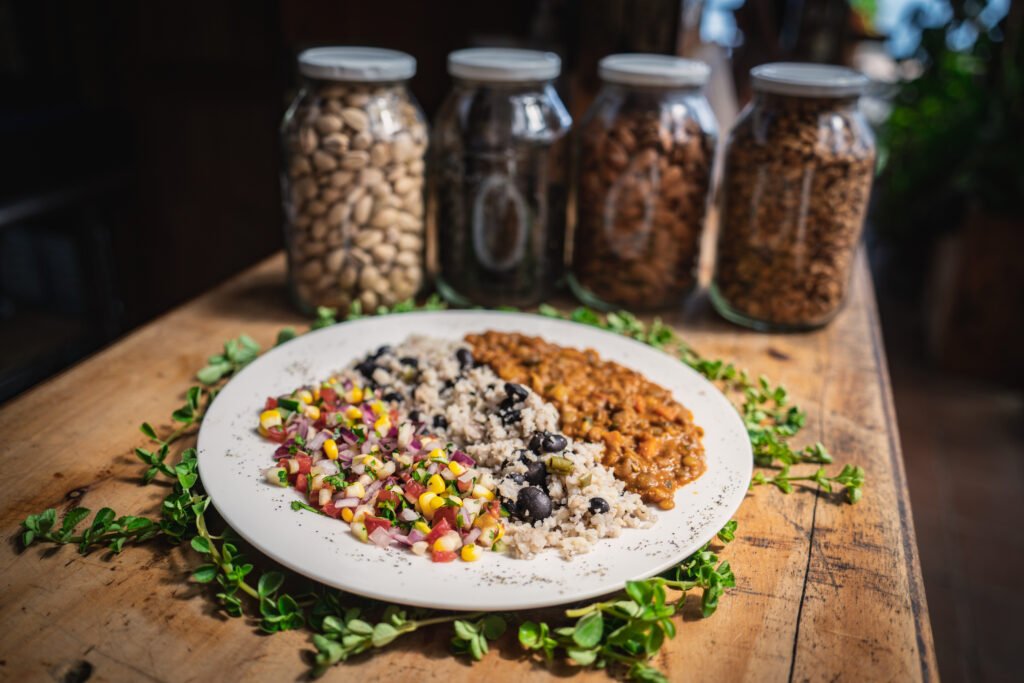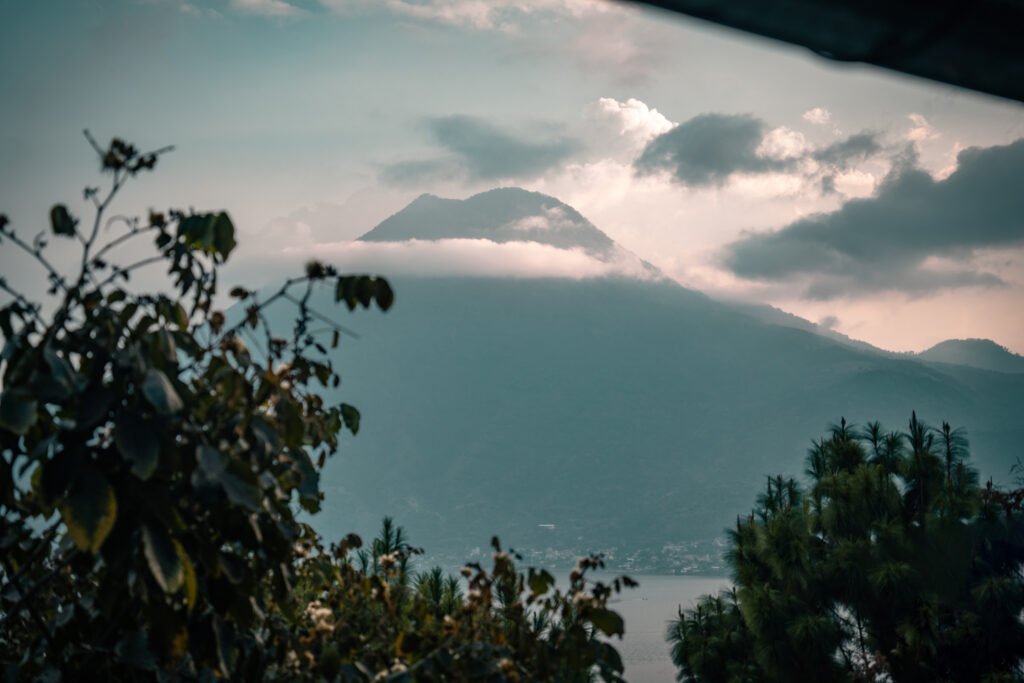Unearth Guatemala’s Beauty: Top 6 Lake Atitlan Culture Gems
Lake Atitlan, a body of water of exquisite beauty, sits cradled in the highlands of Guatemala, encircled by steep, verdant hills and three looming volcanoes. But beyond its natural splendor lies a cultural mosaic, rich with the history and traditions of the indigenous peoples who have made these shores their home for centuries.

The Historical Roots of Lake Atitlan’s Indigenous Communities
Diving deeper into the history of Lake Atitlan’s indigenous communities, we find a narrative that is as ancient as the formidable volcanoes that surround the lake. Many of the customs, social structures, and even the very outlook on life are firmly rooted in a past that stretches back long before modern borders and nations were formed. These roots run deep into the fertile soils of this region, branching out into the multitude of languages and traditions that define the cultural landscape of Lake Atitlán today. The resilience and adaptation of these communities to historical changes, including colonial incursions and modern globalization, highlight their cultural vitality and significance.
Understanding the Mayan Influence on Lake Atitlan’s Traditions
The influence of the Mayan civilization on the traditions of the Lake Atitlan region cannot be overstated. From their complex pantheon of gods to their advanced understandings of astronomy, the Mayan heritage casts a long shadow on the cultural practices found around the lake today. The Mayan influence is evident in the communal work systems, such as the milpa (slash-and-burn agriculture), and in social ceremonies that punctuate the rhythm of life. The subtle artistry and profound philosophical insights offered by Mayan mythologies continue to permeate the consciousness of the indigenous inhabitants of Lake Atitlan, contributing to a rich cultural narrative that is both historical and living.
The Legacy of Pre-Columbian Civilizations Around Lake Atitlan
Exploring the Lake Atitlan’s pre-Columbian past reveals a sophisticated and dynamic society, where complex trade networks, elaborate religious ceremonies, and refined artistic endeavors flourished. The remarkable ingenuity of the Maya in agriculture, weaving, and construction continues to inspire awe and respect. Today, the physical remnants of these ancient civilizations, from the terraced fields that cling to the mountainsides to the ruins that invite contemplation of a distant past, speak volumes about their enduring legacy. Even in the face of modern challenges and changing times, the heart of pre-Columbian traditions beats strongly in the collective memory of Lake Atitlan’s indigenous peoples.
Traditional Dress and Textiles: A Window into Lake Atitlan’s Artistry
We can consider Lake Atitlan’s traditional dress and textiles to be a colorful canvas that vividly illustrates the region’s artistry and heritage. These garments are not only functional apparel but also a form of living art, steeped in history and brimming with cultural narratives. The distinctive embroidery, the intricate loomwork, and the choice of material all tie the wearer to their ancestral lineage, while also showcasing the community’s craftsmanship and aesthetic values. The pride with which these textiles are produced and worn is a testament to their significance as cultural emblems and personal identifiers within the social fabric of Lake Atitlan.
The Significance of Weaving Techniques Amongst Lake Atitlan Villages
Weaving techniques are the threads that bind the cultural identity of Lake Atitlan’s various communities. These techniques are more than a means to create clothing; they embody the wisdom of the ancestors and the creativity of the present. The looms on which these textiles are crafted are not just tools, but storied instruments handed down through generations, often seen as heirlooms in their own right. The choice of weaving techniques, whether it be backstrap loom weaving or the use of more contemporary methods, reflects a deep understanding of the medium and a conversation between age-old tradition and modern innovation.
Colors and Patterns: Decoding Cultural Symbols in Atitlán Textiles
The rich tapestry of colors and patterns in Lake Atitlan textiles tells a compelling story, weaving a lexicon of cultural symbols that convey important aspects of identity and folklore. This intricate visual language is not only a feast for the eyes but also a complex narrative tool, encoding messages about the wearerâs community, beliefs, and history. The dyes used in these textiles are often sourced from local plants, insects, and minerals, lending the fabrics an organic connection to the surrounding landscape. As bearers of meaning, these textiles serve as cultural compasses, guiding the observer through the interwoven stories of Lake Atitlan’s people.
Lake Atitlan’s Festivals and Ceremonies: A Cultural Kaleidoscope
The festivals and ceremonies of Lake Atitlan are a cultural kaleidoscope, displaying an array of colors, sounds, and rituals that are as diverse as the landscape itself. These events are not only occasions for joy and communal bonding but also portals into the spiritual realm, affirming the community’s relationship with the divine. It is here that the fabric of the old world meshes with the threads of the new, creating a cultural tapestry that honors the past while embracing the present. The energy and vibrancy evident in every celebration reflect the enduring strength and adaptability of Lake Atitlan’s cultural heritage.
Marking the Mayan Calendar: Unique Celebrations Throughout the Year
By marking the Mayan calendar, the people of Lake Atitlan engage in unique celebrations that resonate with the sacred rhythm of their timekeeping traditions. These are not simply days marked off on a calendar; they are profound expressions of the cyclical nature of existence as viewed through the Mayan lens. Communities come alive with the spirit of their ancestors as they partake in ceremonies that are meticulously timed to celestial events and agricultural cycles. The harmony between these calendrical observances and the natural world reinforces an ancient worldview that sees time as a living, breathing entity.
Religious Syncretism: The Fusion of Mayan and Catholic Rituals by the Lakeside
The religious syncretism of Lake Atitlan stands as a testament to the blending of worldviews and the adaptability of spiritual expression. The intertwining of Mayan and Catholic rituals creates a vibrant tapestry of belief that captures the essence of religious fusion. Saints may stand in for ancient gods, and prayers might mingle with age-old chants, creating ceremonies that draw from both lineages. This fusion is not a dilution of beliefs but rather a rich amalgamation, revealing a fluidity and depth in spiritual practices that are both rooted in tradition and evolving with contemporary times.
Culinary Journey: Savoring the Flavors of Lake Atitlan’s Cuisine
Embarking on a culinary journey around Lake Atitlan is an exploration of flavors that are as rich and varied as the landscape from which they spring. Local recipes handed down through the ages are a testament to the ingenuity and resourcefulness of the indigenous communities. Each dish, lovingly prepared, is not just nourishment for the body but also for the soul, capturing the essence of the environment and the spirit of the people. From the simplest of meals to the most elaborate of feasts, Lake Atitlán’s cuisine is a vibrant celebration of its cultural diversity and agricultural bounty.
The Role of Corn in Lake Atitlan Gastronomy and Daily Life
Corn’s role in Lake Atitlan gastronomy and daily life cannot be reduced to that of a simple crop; it is a cornerstone of cultural identity and sustenance. Revered in Mayan mythology and enshrined in the daily rituals of meal preparation, corn forms a fundamental part of the socio-cultural fabric of the region. This grain’s versatility is a testament to its importance, with every part being utilized in a variety of culinary applications that showcase the ingenuity of local food traditions. Corn is not merely consumed; it is celebrated and deeply respected as a gift from the earth, worthy of its central place in the rhythms of daily life and festive occasions alike.

Local Delicacies: Spotlight on Lake Atitlan’s Indigenous Ingredients
The spotlight on Lake Atitlan’s local delicacies reveals an Eden of indigenous ingredients, each carrying the signature of the land’s volcanic soils and subtropical climate. The traditional recipes that feature these ingredients are a mosaic of flavors unique to the region. From the humble bean to the fiery chili, each component adds depth and complexity to the local cuisine. Seasonal fruits and edible plants gathered from wilds and gardens alike, find their way into every meal, ensuring a connection between the plate and the diverse ecosystems that nurture the communities of Lake Atitlan.
Spirituality and Belief Systems Among the Peoples of Lake Atitlan
The spirituality and belief systems among the peoples of Lake Atitlan are as intricate and profound as the surrounding landscape itself. Here, spirituality is not confined within the walls of temples or the pages of sacred texts; it is a lived experience, flowing through every aspect of daily life and interwoven with the environment. The respect for nature, the veneration of ancestors, and the intricate cosmologies that guide ethical and moral conduct all stem from a spirituality that is deeply rooted in the fabric of existence. This spirituality reinforces a sense of harmony and interconnectedness, providing a compass for the community’s collective journey through life.
Shamanism and Ancestral Wisdom in Modern Lake Atitlan Society
In the context of modern Lake Atitlan society, shamanism and ancestral wisdom hold a revered and continuous presence. Shamans, often referred to as spiritual guides or healers, are custodians of ancient knowledge, acting as conduits between the people and the sacred. Their practices, deeply rooted in pre-Hispanic traditions, remain relevant as they adapt to modern needs while preserving the core principles of their heritage. These spiritual practitioners play a crucial role in maintaining the community’s connection to ancestral wisdom, blending time-honored rituals with contemporary cultural expressions to foster a living tradition that is firmly anchored in the past yet responsive to the present.
Nature and Divinity: How the Lake Influences Local Spirituality
The relationship between nature and divinity is uniquely expressed at Lake Atitlan, where the natural environment is inseparable from the spiritual beliefs of its people. The majestic beauty of Lake Atitlan, with its serene waters and dramatic volcanic backdrop, is not merely a geographic feature; it is an embodiment of the sacred. The cultural narratives of the local communities are steeped in this interplay between the physical and the ethereal, where every natural phenomenon is infused with divine significance. For the inhabitants, the lake itself is a divine being, a source of life, and a reflection of the cosmos, underscoring the profound bond between the environment and the spiritual well-being of the people.
Economic Practices: Sustaining Lake Atitlan’s Cultural Heritage
Economic practices in the Lake Atitlan region are not just transactions of goods and services; they are fundamental to sustaining the area’s rich cultural heritage. Within this region, the economy does not stand apart from culture; instead, it is intimately tied to traditions and ways of life that have been carefully honed over centuries. Each economic activity, from the tending of crops to the weaving of textiles, carries with it cultural significance, ensuring that the local economy remains a living testament to the community’s values and history. As such, the way in which the people of Lake Atitlán engage in economic endeavors reflects a deep understanding and respect for their cultural patrimony.
From Fishing to Tourism: The Evolving Economic Landscape
Lake Atitlan has seen its economic landscape evolve, with fishing and tourism becoming pillars of the local economy. Fishing, once the sole source of sustenance, now shares the spotlight with a burgeoning tourism industry that pays homage to the immense natural beauty and cultural heritage of the area. The integration of tourism into the economic framework is carried out with mindfulness towards the environment and the cultural traditions, ensuring that the very features that attract visitors are not compromised. Careful stewardship is necessary to maintain a balance where economic growth supports cultural preservation, allowing residents and visitors alike to reap the benefits of this stunning destination.
Handicrafts and Coffee: Preserving Cultural Identity through Commerce
Handicrafts and coffee play a significant role in preserving the cultural identity of Lake Atitlan’s communities through commerce. The intricate textiles, vibrant paintings, and handcrafted goods that emerge from the skilled hands of local artisans are more than mere commodities; they are vehicles for cultural expression and continuity. Similarly, the coffee produced in the high-altitude climates of Lake Atitln’s slopes carries the flavor of the land and the stories of those who cultivate it. In trading these goods, the people of Lake Atitlán communicate their cultural narratives and sustain their heritage, fostering a sense of pride in their work that resonates with customers across the globe.
FAQ: Questions and Answers of of Lake Atitlan culture
Why is Lake Atitlan sacred?
What is Lake Atitlan Guatemala known for?
Lake Atitlan, located in the Sierra Madre mountain range in Guatemala, is renowned for its breathtaking natural beauty, clear blue waters, and picturesque setting surrounded by lush hills and three imposing volcanoes: Atitlan, Toliman, and San Pedro. Its scenic charm has made it a popular tourist destination, drawing visitors from around the world who come to enjoy activities such as kayaking, swimming, hiking, and indigenous cultural experiences. In addition, the lake is known for the vibrant Mayan communities that inhabit its shores, each with its unique cultural identity, traditional clothing, and artisanal crafts. The area is also recognized for its coffee cultivation, making it a significant location for coffee enthusiasts seeking an authentic taste of Guatemalan highland coffee.
What is the myth of Lake Atitlan?
What culture can you experience and see clearly around Lake Atitlan?
Around Lake Atitlan, visitors can immerse themselves in the rich culture of various Maya groups, predominantly the Tz’utujil and Kaqchikel peoples. The region is a tapestry of colorful traditional textiles, distinct languages, and a wealth of ancestral customs and ceremonies that continue to thrive. Each of the lakeside towns offers a unique cultural experience, with residents proudly wearing their traditional dress and engaging in artisanal crafts, such as weaving and beading. Markets abound with handcrafted items showcasing intricate designs and vibrant colors. Cultural events and festivals celebrated throughout the year provide insight into local traditions, music, dance, and cuisine, reflecting a deep-rooted identity that has been preserved despite the passage of time.
How has Lake Atitlan’s ecosystem been affected by human activity?
Lake Atitlan’s ecosystem has faced significant pressure from human activity, including pollution, deforestation, and the introduction of non-native species. Rapid population growth and tourism have led to increased waste and the contamination of water sources, adversely affecting the water quality. The use of pesticides and fertilizers in agriculture, coupled with improper sewage treatment, has contributed to the proliferation of cyanobacteria blooms, which pose a threat to aquatic life and local populations that rely on the lake for sustenance. Efforts to reverse the ecological impact are ongoing, with conservation initiatives aimed at restoring the lake’s natural balance.
Are there any active volcanoes around Lake Atitlan?
Although the volcanoes surrounding Lake Atitlan—Volcan Atitlan, Volcan San Pedro, and Volcan Toliman—are not currently active, they have experienced eruptions in the geologic past. Volcan Atitlan is the youngest and historically the most active of the three, with its last recorded eruption occurring around 1853. Nonetheless, all three volcanoes are closely monitored for any signs of volcanic activity, and their dormant status contributes to the serene landscape that characterizes the region.
What are the best ways to travel to Lake Atitlan?
Traveling to Lake Atitlan can be done via road or by taking a flight to Guatemala City followed by a bus or shuttle to the lake. The most common route is from Guatemala City to the town of Panajachel, which serves as the main gateway to the lake region. From there, boats or ferries can transport visitors to the various lakeside towns and villages. Shuttle services and private transfers can also be arranged from Antigua, Guatemala, or other major tourist destinations within the country.
What is the climate like around Lake Atitlan?
The climate around Lake Atitlan is characterized by a subtropical highland climate, which means it generally experiences mild and temperate weather throughout the year. The area boasts a perennial spring-like climate with average daytime temperatures ranging from about 18 to 29 degrees Celsius (65 to 85 degrees Fahrenheit). The dry season, from November to April, is marked by clear, sunny days and cooler nights, while the wet season, from May to October, brings rain primarily in the afternoons and evenings, with mornings often remaining clear and sunny. The altitude of approximately 1,562 meters (5,125 feet) ensures cooler temperatures than the coastal regions, making it an ideal climate for outdoor activities and exploration.

Summary of Lake Atitlan culture
In our exploration of Lake Atitlán’s rich culture, we’ve delved into indigenous roots, vibrant textiles, festivals, and flavors. Reflecting on spirituality and economic dynamics, we leave with a deeper appreciation for its enduring heritage.
Don’t know where to stay? At Eagles Nest we offer all inclusive rooms. Along side daily activites, yoga classes, mouthwatering food and breathtaking views. Book here.



